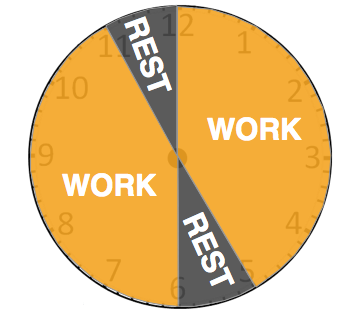Productivity: How I Handle Interruptions Without Losing Focus
Did you know the average worker switches tasks every three minutes?
Worse yet, it takes up to 30 minutes to resume the original task after switching.
Typically, this rapid task switching is attributed to something I consider “Tiny Interruptions.”
Tiny Interruptions are a text message, an email or chat notification from a coworker, a mention on Twitter, a Facebook notification, a phone call from a friend, or a quick question in person from a coworker.

On the surface, they’re small. They’re tiny little interruptions that can be completed within a minute or two. However, those tiny little interruptions quickly add up over time.
Yet the problem isn’t how quickly they add up; it’s how quickly I can lose focus on my most important projects. Because Tiny Interruptions usually come at the worst time: when I’m finally in the zone on a project.
Tiny Interruptions are so minor that it would be a waste of time to prioritize them as a task or outsource them because by the time we prioritized them or sent instructions, we could have done it our self.
So…what do we do?
Well, according to productivity expert David Allen, he suggests completing Tiny Interruptions immediately.
He created a famous productivity theory called The Two Minute Rule that follows this exact principle.
The Two Minute Rule states that if a task can be accomplished within two minutes or less, it should be done immediately. Following this method, it keeps our to-do list from being rapidly stuffed with a bunch of small tasks.
Here’s the problem with that:
Doing a task immediately forces concentration away from our current project.
When we’re constantly switching tasks, we cannot achieve the mental state known as “flow,” conceptualized by Mihaly Csikszentmihalyi.
Flow is when we’re fully immersed in an activity, feeling naturally energetic and in the zone. Here is Csikszentmihalyi’s psychological model for achieving flow, which I’ll discuss more in the future:

In order to achieve flow, which cannot be done following David Allen’s Two Minute Rule, I use a different strategy.
I finish my current project first, then do the Tiny Interruption.
Rather than immediately doing an interruption which takes less than two minutes, I’ll delay it until I’m finished working on my most important task.
To preserve energy throughout the day, I’ll rotate between 25 minutes of work and 5 minutes of rest. A regular hour looks like this:

During the 5 minute periods of rest, I’ll come back to the interruption.
If it’s an email, text message, or phone call, I’ll simply wait until the 25 minutes is over to answer it. If it’s something in person, I’ll politely ask, “Hey, could this wait a minute? I’m almost done with this and on a tight deadline.”
Usually, people are cool with that.
So, instead of letting constant distractions in, which pull me out of the zone, I have conscious periods on when to tackle them.
By using this method, my to-do list doesn’t get flooded with small tasks, just like David Allen suggests. But I also give myself the opportunity to get in the zone on a project.
If I don’t work in 25-minute intervals, I’d never been able to achieve Csikszentmihalyi’s psychological state of flow. But if I don’t answer interruptions as they accumulate throughout the day, my to-do list would rapidly grow into a nightmare of small tasks.
This strategy, like most things in life, is about finding that perfect balance between the two.
This was a guest post written by Scott Tousley.
About the author:
Scott Tousley
LinkedIn: https://www.linkedin.com/in/scotttousley/
Scott is a Senior Team Lead, User Acquisition (All Products) at HubSpot. Scott loves reading about cognitive psychology, behavioral economics, and human behavior in general. His favorite word is “why.” He’s happy to chat via Twitter (@sjtousley) or email [email protected].

0 Comments